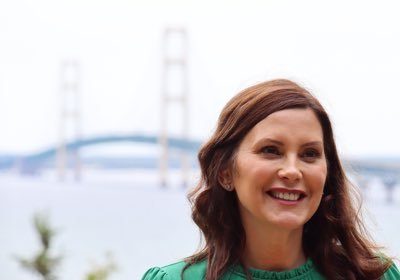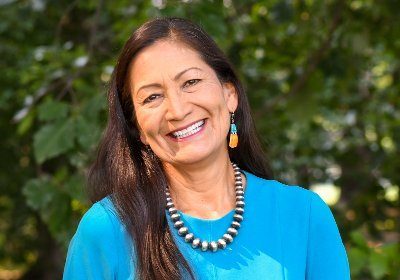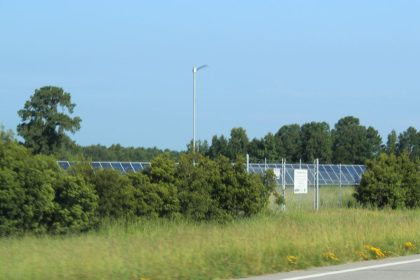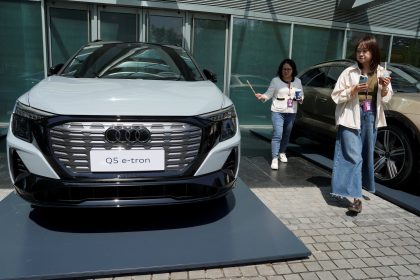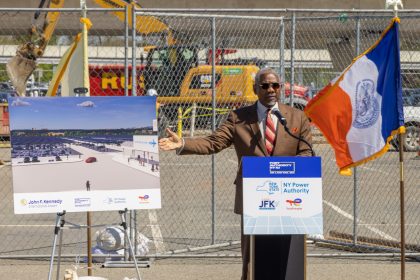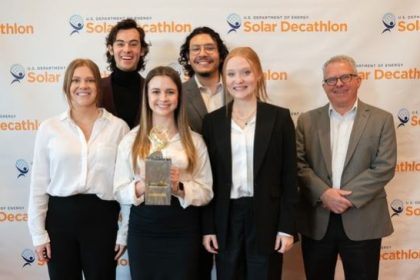Bayer Makes Idaho Platform for Its Climate Neutral Ambitions

BOISE, Idaho — Bayer, the global life sciences, health care and nutrition company, has long maintained that it wants its operations and those of its entire value chain to be climate neutral and fully fossil-fuel free by 2030 — just seven years from now.
Recently the company took another significant step toward fulfilling that ambition, signing a landmark agreement with Cat Creek Energy, an independent renewable energy power producer based in Idaho.
As The Well News found out recently from Matthias Berninger, vice president of Public Affairs, Science and Sustainability at Bayer, the structured renewable energy credit purchase agreement between the two companies will lead to the construction of multiple wind and solar farms, as well as energy storage facilities that will result in the generation of 1.4 terawatt hours of clean electricity annually.
In more tangible terms, that means the energy produced by the projects will eventually be equal to the energy consumed annually by 150 houses. At the same time the combined projects will enable Bayer to reduce its annual greenhouse gas emissions by some 370,000 tons — roughly equivalent to the emissions produced by 270,000 mid-sized cars.
As Berninger explained during a recent interview, all of this is being done in accordance with the United Nations’ sustainable development goals and the Paris Accord with the aim of limiting global warming to 1.5 degrees Celsius by 2050.
In addition, Bayer has committed to the highest standards for sustainable renewable electricity based on guidelines from the World Wide Fund for Nature, including the proximity of renewable energy production facilities to Bayer sites.
What all this means for Idaho is that its conversion to clean reliable energy by 2045 has now been, for lack of a better word, supercharged.
For rural communities in the state, the result will be over $1.5 billion in new electrical infrastructure, the creation of hundreds of jobs and the contribution of millions of dollars in year-over-year tax revenues for counties and schools where the projects are built.
TWN:
I guess the place to start is with the big picture. Now, I know there’s a certain amount of buying of energy credits involved in what you’re doing, but rather than simply stopping there — as many companies do — you’ve got a whole lot of project development going on.
Matthias Berninger:
That’s correct. I would say that, first of all, we want to move to 100% renewable electricity as fast as possible. And given that renewables are now so cost-competitive, this really is a no brainer.
The second, more complicated, factor for us is that we also said we do not just want to buy renewable energy, we want to actually contribute to building capacity. So, we want to be additive in all renewable energy demands, which means we partner with developers who develop and invest in the additional capacity in return for us giving them a long-term purchasing guarantee.
TWN:
Before we formally started this interview, we talked briefly about the project being in land-locked Idaho and you joked about there being no offshore wind component to this current project. Crossing that one off the list, what are the components of this current initiative?
Matthias Berninger:
What I find exciting about the project is it combines wind and solar, and then to those we’ve added electronic storage.
When you rely on having usable energy, all year round, day and night, you have to build storage capacity into the equation. What I find exciting about the conceptual side of this project is that the base load argument is none of our concern, because we’ll have state of the art energy storage right here on our site.
TWN:
So how big will this project be?
Matthias Berninger:
Well, based on our calculations, I think the best way you can think about it is as a 300-mile stretch of football fields, lined up one after another.
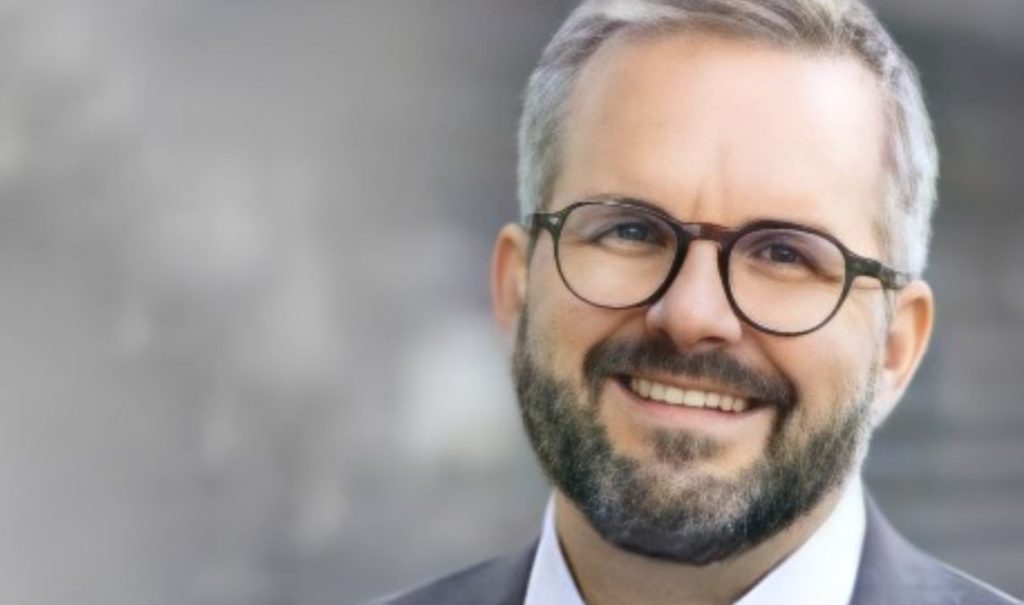
TWN:
Wow.
Matthias Berninger:
That’s a lot.
TWN:
People talk all the time about the importance of onsite energy storage. Is it, in this case, the critical piece that makes the rest of the project doable?
Matthias Berninger:
Well, it is if you want to go 100% renewable. You have to bake in baseload challenges when you do your calculations and, at the end of the day, addressing them always comes down to utilizing some kind of energy storage component. Otherwise, you wind up always having to rely on natural gas or nuclear as your “go-to” energy source.
As we were developing this project, one of the things that was constantly on our minds was this one facility we have where we isolate phosphates from the surrounding minerals. We’re basically melting stones there, and it accounts for 10% of our carbon emissions.
So you need a lot of electricity to begin with and you need it constantly. This was, for us, a very important challenge to address.
TWN:
Bayer has obviously had a long time presence in Idaho. I’m sure you have a strong relationship with the state’s economic development community and officials; how was it working with their energy folks?
Matthias Berninger:
Well, let me offer this observation, which I think applies generally in the United States. While there might be a lot of politics and a resistance to change in many areas, when it comes to realizing business opportunities, there is a fair degree of pragmatism.
In this case, the communities in Idaho will benefit, and I should point out that when it came to this project, we have not asked the state for any subsidies. We actually see this as a gift that will keep on giving to the state, reducing its dependency on electricity imports. And as you know, currently, Idaho is a net energy importer.
Now, I will say that it is important, generally speaking, to develop projects that make sense, irrespective of the subsidy background.
What makes this one so exciting is that the technology exists today in the renewable space to make it cost competitive with fossil fuels.
TWN:
You’ve mentioned wind and solar and energy storage. Did you give any thought to geothermal?
Matthias Berninger:
In this case, it was not really an option. That said, it is something we think about because when you look at our energy needs that are not directly related to powering our facilities, our biggest use of energy stems from having to heat them. This is an area in which there is a huge demand for energy. And if you want to be carbon neutral at some point in time, you also have to address the heat component of your facilities.
TWN:
Could you elaborate on your goal of wanting to be carbon neutral?
Matthias Berninger:
Of course. There are a lot of conversations that revolve around degrees of Celsius, carbon equivalents, and on and on. But basically, what it comes down to is, if a company commits to the Paris climate agreement, it requires you to become carbon neutral.
Secondly, to cut carbon emissions in half, you have to set benchmarks and whatever is left by way of emissions at your end date, you’ve have to find credible offsets for them. That, basically, is the generic decarbonization strategy of any company that talks to you about carbon neutrality.
And that’s the path we have embarked on, drawing attention to the kind of projects we’re talking about, along the way.
Now, to be bold here means 1.4 terawatt hours, the largest ever single company project in renewables that we have been able to identify. Our competitor, BNSF, had a 0.9 terawatt hour project in Germany, so we see what we’re doing as making a very, very bold commitment to renewable energy.
TWN:
In a recent press release, Bayer announced it is undertaking this project in partnership with Cat Creek Energy. What is their role in all this, and when do you anticipate work starting and ending on the renewables and storage facilities.
Matthias Berninger:
Well, they are our partners, and what they do is handle the conception and construction end of things, and they are the ones deploying the technologies that will enable us to transition to a decarbonized electrical grid.
As for timelines, a lot of the preliminary work has already been done and we hope to be completely finished by 2028.
TWN:
Will ramping up toward completion require you to hire many more people to get to your decarbonization goal?
Matthias Berninger:
Generally speaking, it doesn’t change us very much, because we have not had an in-house electricity production team before. It’s kind of outside of our scope. That said, Cat Creek will probably grow.
One thing I do want to say in this regard is that there is a difference between the fossil fuel, nuclear and renewables sectors and it’s that with renewables, you really need to enlarge your workforce during the installation phase, but you need far fewer workers to kind of keep operations going.
But labor is always important and I think you will see a lot of workers brought into achieving the mission at different points … and they will be part of the annual tax revenue and additional economic stimulus in rural communities across Idaho.
TWN:
Let’s talk about that a little bit.
Matthias Berninger:
Well, obviously, there are going to be additional tax revenues that will benefit rural communities in the area. The other thing that’s really important in the renewable space is that you adhere to the highest level of standards when it comes to how you introduce these facilities into communities. You know as well as I do that when you introduce renewables into an area, not everybody likes it. There are conflicts, on occasion.
In order to minimize that, we have decided to follow the next generation wind power guidelines developed by the World Wildlife Foundation.
So, you have additional economic stimulus. You have a guarantee of additional tax revenues, and, last but not least, you have a commitment that as we build these facilities, we’re going to do so aligned with standards intended to protect the natural environment and enhance natural conservation.
What the World Wildlife Foundation has done is recognized that there has been a conflict between decarbonization and protecting nature and created a set of standards that allow us to balance those legitimate interests.
TWN:
One last question for you. I think you’ll agree that Bayer is a generally well-thought-of company … your products are pretty ubiquitous in our society … nevertheless, do you think you get a bounce in public perception from this … I mean, is there some kind of quantifiable benefit that a large, established company gets from greening their operation like this?
Matthias Berninger:
First of all, thank you for the compliment. I mean, Bayer as a company was founded when Abraham Lincoln was president, so it’s quite old and you’re right, very well-established.
But the way I look at this is, what’s most important is that companies not just talk about sustainability or engage in what I call sustainability-related announcements, but that they deliver on their commitments. Many don’t.
And if you don’t deliver on the first commitment, what happens the next time you make one? The public ignores you. Or they remind you that you didn’t fulfill your promise the first time around.
So, I think the most important thing is that when we say we want to decarbonize our value chain, that we actually demonstrate, through bold action, that we are doing it. The beauty here is that it is not a symbolic project where we put up a few solar panels on a factory and then have a big PR event.
In contrast, I think the scale of the design of our project, and our long-term commitment to it, is generally well regarded, because it puts the money and the action where our mouths are.
Dan can be reached at [email protected] and @DanMcCue



















